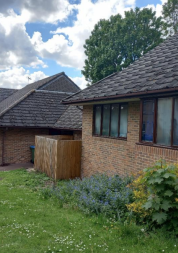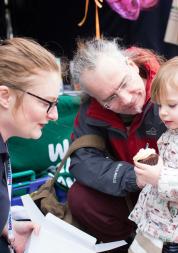167 Lodge Hill Care Home

The home accepts referrals for people with severe learning disabilities and some additional needs, aged between 18-65 years old and mixed gender. There is space for six residents and four are currently placed at the home (two males and two females). Of the current residents, additional diagnoses include cerebral palsy, dementia and autism.
We had a preliminary meeting with the care home’s assistant manager on the day of our visit. We were unable to speak to any residents due to either them being at their day centre or communication difficulties. We were shown around the home by the assistant manager.
Summary of Findings
CQC Findings
The Care Quality Commission (CQC) carried out an unannounced comprehensive visit to 167 Lodge Hill care home on the 28th and 29th December 2016. This followed a previous comprehensive inspection on the 6th and 7th of August 2015, where they were found to be in breach of regulations regarding legal requirements around individuals who lacked capacity to consent. However, at their most recent inspection, the home had rectified this and was rated as ‘good’ overall across all areas.
Building & Security
The building itself is on an ex-NHS site which has other health services based within it, such as a district nurse’s office and the Royal Borough of Greenwich run care home next door at 169 Lodge Hill. The estate is well-kept and attractive. However, it does have a somewhat clinical feel, especially at the entrance where there are NHS signs very visibly displayed. Although 169 Lodge Hill is clearly signposted, we did not see any signs for number 167 and had to ask for directions on the day.
The home itself is a well-maintained, small bungalow with disabled ramps leading up to the front door. It has a large front lawn; the grass was slightly overgrown and needs some attention. There is secure access to the building as you press a call button to enter. On the day we visited the door was answered in a prompt and friendly manner by the assistant manager, and we were asked to sign in on our arrival.
Communal spaces
The building is rented from Hyde Housing Association, who are responsible for improvements and maintenance of the home. It has an open plan kitchen which felt homely, tidy and clean. There is space for residents to eat together around a large dining room table, and the furnishings and equipment appeared to be well looked after and in good condition. The kitchen joins onto a living room area which was comfortable and well-furnished. There was an additional table area where residents could sit or eat together, as well as a TV and music system. From the kitchen, residents can also access a large and pleasant communal garden.
In front of the reception hallway is a ‘tenants’ noticeboard’. Some of the information on this needed to be updated, such as the ‘day opportunities timetable’ and the ‘staff on duty’ board. However, we were glad to see the home had it’s CQC ratings displayed, and had additional information available for residents, such as examples of Makaton and British Sign Language.
The corridors in the home were pleasant but needed some redecorating, for example where paint was chipped or worn away. The assistant manager recognised that the corridors were slightly too narrow for some models of wheelchairs and that this needs to be addressed.
There are two communal showers between the six rooms, and an additional single toilet. The toilet was well-stocked, but the floor was somewhat worn and there was a slightly unpleasant odour inside. It is in need of some maintenance work.
Personal spaces
We were shown a couple of the residents’ bedrooms on the day we visited. These were personalised, decorated individually according to personal tastes and well-equipped. There was evidence of personal belongings as well as photos of family members in some of the rooms. Rooms had pictures on the doors to show who their occupier was, and the rooms we saw were clean, odourless and tidy.
Feedback and service user involvement
RBG centrally organise family questionnaires sent out annually. The home itself conducts keyworker meetings every six weeks to gauge resident wellbeing and collect feedback, as well as monthly tenants’ meetings. Where verbal communication is difficult, staff will use non-verbal clues or pictorial aids. Staff also help to support residents to feedback on the healthcare they are receiving from other services they use.
Currently the home does not organise family members meetings to gather feedback. We were told that they do communicate with family members regularly, on a one to one basis.
There was a complaints, comments and compliments book in the reception area of the home. However, there had not been any entrants for a number of months.
Other arising issues
The home supports residents with a broad range of complex needs, who need a significant amount of support and personal care. We were left somewhat concerned after our visit that support workers are being asked to carry out tasks additional to their role, which may fall further into the field of nursing care. We were also concerned that complex referrals may be being made to 167 Lodge Hill where they are not necessarily appropriate.
Overall Summary
We felt that 167 Lodge Hill was a well-equipped and attractive care home with a comfortable, homely feel. Staff demonstrated to us that they were making clear efforts to make improvements for service users, especially in the areas of activities and on-site facilities. There are still some areas of improvement which we have identified in our recommendations below, but overall, we were impressed with the general layout and environment, and the enthusiasm shown by the staff we spoke to on the day.
Downloads
If you need this report in an alternative format, please email info@healthwatchgreenwich.co.uk

